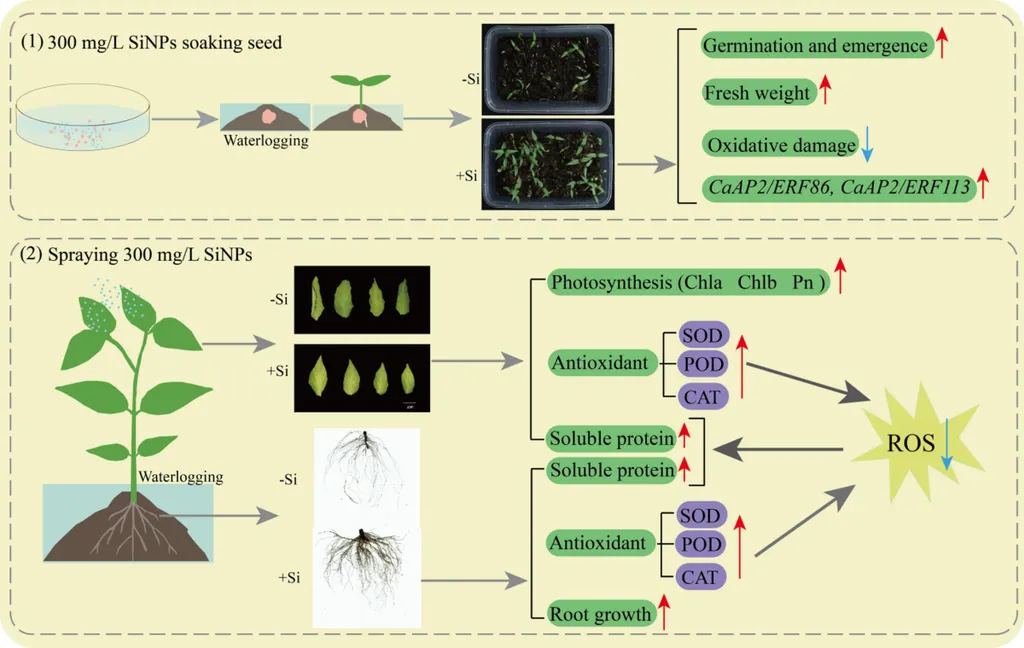In a groundbreaking study published in *Scientia Horticulturae*, researchers have uncovered how silica nanoparticles (SiNPs) can significantly enhance the germination of ginger, a crop with vast medicinal and culinary applications. The research, led by Xiaoqin Zhao of the Engineering Research Center of Ecology and Agricultural Use of Wetland at Yangtze University, sheds light on the physiological and biochemical changes that occur during ginger rhizome germination when treated with SiNPs.
Ginger, a versatile crop used in both traditional medicine and modern cuisine, has long been valued for its therapeutic properties and distinct flavor. However, its germination process has been a challenge for farmers and researchers alike. The study demonstrates that SiNPs can accelerate this process by regulating sugar and hormone metabolism, as well as the expression of related genes.
After 7, 14, and 21 days of germination, the researchers observed significant changes in various physiological parameters of ginger rhizomes. The germination rate, weight reduction, fructose and glucose contents, and the activities of α- and β-amylases were all significantly increased. Conversely, respiration intensity, sucrose content, and starch levels were significantly reduced.
One of the most notable findings was the upregulation of genes involved in sucrose and starch metabolism, such as ZoSweet7, ZoSSIVa, ZoSPS1, and ZoSUS5, when treated with a 100 mg L−1 SiNP solution (SiNP100). This upregulation led to higher concentrations of glucose and fructose, which are crucial for the germination process. “The enhanced activities of α- and β-amylases facilitated starch hydrolysis, further reducing starch content and accelerating germination,” explained Zhao.
The study also revealed that SiNP100 treatment induced the expression of genes DELLA, AUX1, and B-ARR, leading to a significant increase in the levels of endogenous hormones such as IAA, TZR, IP, and GA3. Additionally, the treatment downregulated the expression of PP2C and B-ARR, inhibiting the synthesis of endogenous ABA, which ultimately facilitated ginger rhizome germination.
The implications of this research for the agriculture sector are profound. By understanding how SiNPs can orchestrate sugar-hormone crosstalk and activate metabolic gene networks, farmers and agritech companies can develop more efficient germination protocols. This could lead to higher yields, improved crop quality, and reduced production costs, ultimately benefiting both producers and consumers.
As the global demand for ginger continues to rise, driven by its increasing popularity in both the food and pharmaceutical industries, the need for innovative agricultural techniques becomes ever more critical. This study not only advances the theoretical frameworks for SiNP applications in ginger agriculture but also underscores their potential to optimize germination protocols.
In the words of the lead author, “This work provides a solid foundation for future research and practical applications of SiNPs in ginger cultivation.” The findings could pave the way for new advancements in the field, offering a promising solution to the challenges faced by ginger farmers worldwide.

